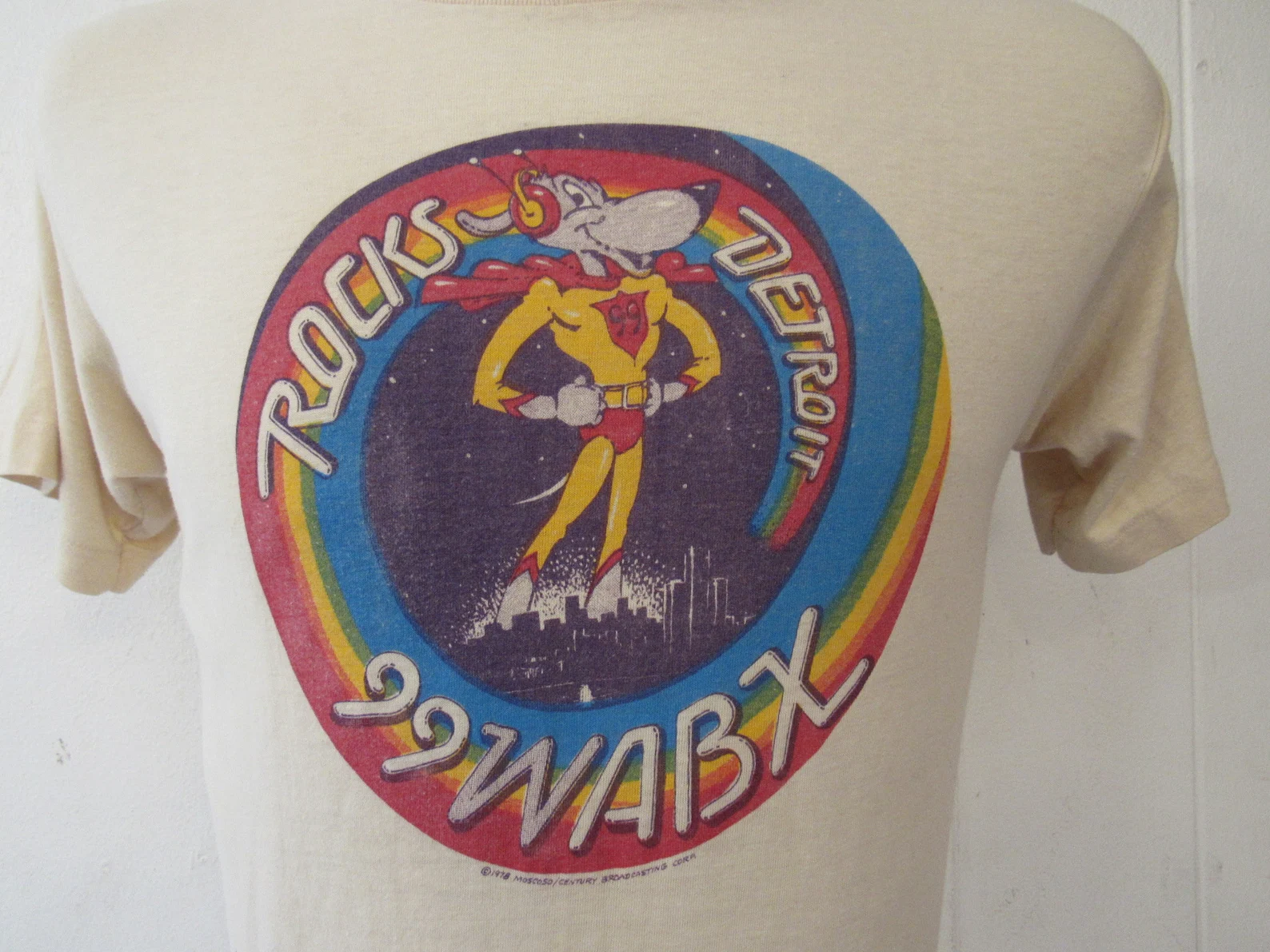
A number of you commented on the post I wrote last week about my dear friend and colleague, Buzz Van Houten. Besides my often vivid descriptions of Buzz and our adventures in Detroit rock radio in the ’70s and ’80s, a number of you were taken by how FM radio was so different back then.
And indeed it was. Without the distractions and disruptions created by Internet platforms like streaming, podcasting, video, and social media, radio during that era was the source for audio entertainment and information in the forms of music, talk, and personality programming content. There was no “creator economy” back then. Ordinary citizens weren’t making content that more than a handful of people could see and hear. They were simply members of mass, undifferentiated audiences—and they all (mostly happily) listened to AM and FM radio.
One thing about radio in that era is difficult to dispute, even through today’s loaded wheel of media choices:
Radio was cool.
 Note my use of the past tense. It’s intentional. I’m not suggesting broadcast radio is “uncool.” That entire argument is subjective, of course, and very much in the ear of the beholder. My “take,” based on the volume of research we do and have conducted over the years, indicates radio’s “coolosity”—or “cool factor”—has noticeably slipped in recent years.
Note my use of the past tense. It’s intentional. I’m not suggesting broadcast radio is “uncool.” That entire argument is subjective, of course, and very much in the ear of the beholder. My “take,” based on the volume of research we do and have conducted over the years, indicates radio’s “coolosity”—or “cool factor”—has noticeably slipped in recent years.
It wasn’t all that long ago when somewhat found out you worked in radio, and their first-blush response would almost always be, “That’s cool—sounds like fun.” Or “Oh wow, are you on the air?”
Today, while there are some who still react positively to a radio prompt—mostly those with gray hair—you’re just as likely to hear the disheartening retort: “Oh, does anybody still listen to radio anymore?” Or “I haven’t listened to the radio for I don’t even know how long.”
How do we know that “back in the day” radio was cool? Well, you talk to people who were around back then and they’ll be more than happy to tell you—in rich detail—about the DJs and stations they grew up listening to. They might entertain you with stories about radio station events they went to. And many are still intensely proud to show you a station T-shirt from that era that might be falling apart due to way too many washer/dryer cycles over the decades. And they still wear that “two sizes too small” T-shirt to prove they’re still cool because they listened to a radio station that was once considered cool.
Bottom line: radio was part of their lives back then. For some, a favorite station actually defined them.
Today? There’s not much chance of that.
Much of this success was driven by radio’s “cool factor.”
It was even etched into the lyrics of hit songs. In fact, if an artist wanted to fast-track a hit, one tactic was to include key lyrics or even the title that contained radio references. Songs like “Radar Love,” “The Spirit of Radio,” “Turn Up the Radio,” and “FM” all evoked radio imagery and positive references. Tom Petty’s 1989 hit, “Runnin’ Down a Dream” stands out as one of the great “driving with the radio on” songs.
But in recent years, the practice of including radio-laced lyrics has greatly diminished. And there are cynical songs—like “The Last DJ” by Tom Petty and “Radio, Radio” by Elvis Costello—that question the way the radio industry does business. It’s interesting how Petty’s perceptions about radio turned around in 13 years. “The Last DJ” was released in 2002, an ode to the rebellious DJs of that bygone era, notably Jim Ladd (pictured) who made his mark on several stations throughout the Southern California era.
question the way the radio industry does business. It’s interesting how Petty’s perceptions about radio turned around in 13 years. “The Last DJ” was released in 2002, an ode to the rebellious DJs of that bygone era, notably Jim Ladd (pictured) who made his mark on several stations throughout the Southern California era.
Clearly, praise from the music side of the entertainment industry has been muted by the never-ending financial struggle over performance royalties and the intensifying acrimony between “radio and records” that would have been unimaginable just a few short decades ago.
Perhaps if radio’s movers and shakers had a better grasp on defining “What is cool?,” the industry might be closer to regaining the mantle. And to that end, there is now actual peer-reviewed research that was designed to answer the question. Recently, Fast Company reported on a four-year international research study charged with nailing down what it means to be cool.
The researchers used a large sample of nearly 6,000 or so respondents from 13 cultural regions around the world doing field work that took place between 2018 and 2022. And it turned out that the factors that define a “cool” person are universal and timeless wherever you go. Even among non-English speakers, “cool” has become a standard term, pronounced just like we do here in the U.S.
To make sure they had relative measures, the researchers also asked participants to describe “not cool” (or “uncool”), as well as “good” and “not good.” Yes, there’s overlap between “cool” and “good,” but there are also important distinctions that set “cool” apart.
The researchers talk about the genesis of “cool,” with beginnings in what they describe as “small, rebellious subcultures, including among Black jazz musicians in the 1940s and the beatniks in the 1950s.”
To summarize, “cool” people traits include being extroverted, powerful, hedonistic, adventurous, open, and autonomous. There’s also an interesting discussion about musicians, a category where cool abounds and is obviously very close to home for radio. The study notes that “a rock band seemed more cool when it displayed moderate levels of autonomy (e.g., not trying to write songs that everyone likes) than extreme autonomy (e.g., not caring at all what others think about their music).”
Using those measures, it’s not much of a leap to understand why that renegade group of FM radio stations in the late ’60s and early ’70s was able to achieve a modicum of “cool.”
The researcher in me was compelled to download the 22 page abstract from the American Psychological Association (available here). There are some nuggets in their data that speak to radio’s quest to recapture some of its lost cool.
- Cool is a constant, a word used across socioeconomic and global groups with essentially the same connotation. And cool is a resilient state of being, surviving the comings and going of slang that comes and goes into and out of the lexicon.
- Power + adventurousness can define cool—qualities common to billionaire Richard Branson.
- On the other hand, Elon Musk has some of these same qualities but when you mix in hedonism and autonomy, things can get “uncool” in a hurry. The authors cite such a moment when Musk
 smoked weed on The Joe Rogan Experience podcast. Musk might have reinforced those same traits when he took that chainsaw onstage at a conservative conference back in February.
smoked weed on The Joe Rogan Experience podcast. Musk might have reinforced those same traits when he took that chainsaw onstage at a conservative conference back in February. - Many people aspire to achieve some level of cool when they admire those they deem to fit the definition. And when icons exude traits like creativity and innovation, their “cool factor” increases. Those are the factors, for example, that propelled Steve Jobs into the cool column.
- Status is part of the cool calculus, an indicator of the “relative amount of prestige, respect, admiration, and deference that a person receives from a group. It fits the trajectory Taylor Swift has been on in recent years, as well as Mike McVay, for example, in “radio world.”
- Here’s something for radio to consider from the study: “If coolness motivates the spread of innovation, then coolness should be associated with creating and diffusing new ideas. Prior research reports that products and brands can become cool by being novel.” The pursuit of new ideas, new formats, and new concepts could only be additive to radio’s quest to recapture some cool.
- “Cultural innovation”—This is right up radio’s historic alley. The study’s authors note how “success is often linked to participation in cultural trends rather than labor or production, which allows cultural innovators—such as artists and athletes—to showcase and shape what is considered cool.” Radio was in this zone when it ranked higher on the “coolness chart.”
This last point suggests to me how radio could once again be a player in this game, as challenging at it may seem in a world where it competes against Apple, Spotify, Amazon, YouTube, and millions of podcasts. Smart risk-taking goes to the core of how our legacy industry could once again be a player in the “coolverse.”
So much for the academicians. What about the modern source authority on everything these days?
AI
That’s tomorrow’s blog post—putting those Large Language Models to work on defining “cool,” as well as the road for radio in its pursuit. After all, trillions of dollars have been invested in this technology. Why not put it to work for us?
The bots are warming up, ready to map out the path.
See you tomorrow.
Originally published by Jacobs Media









